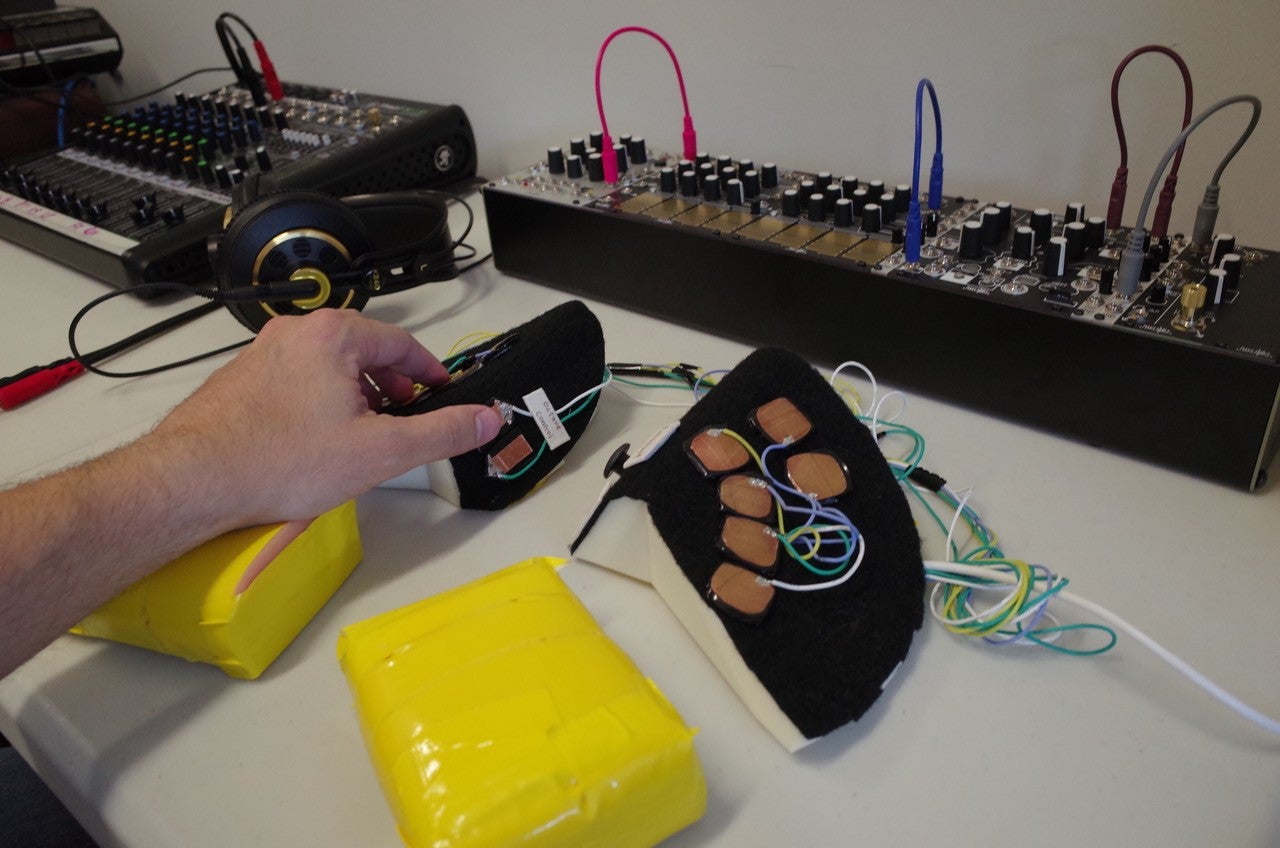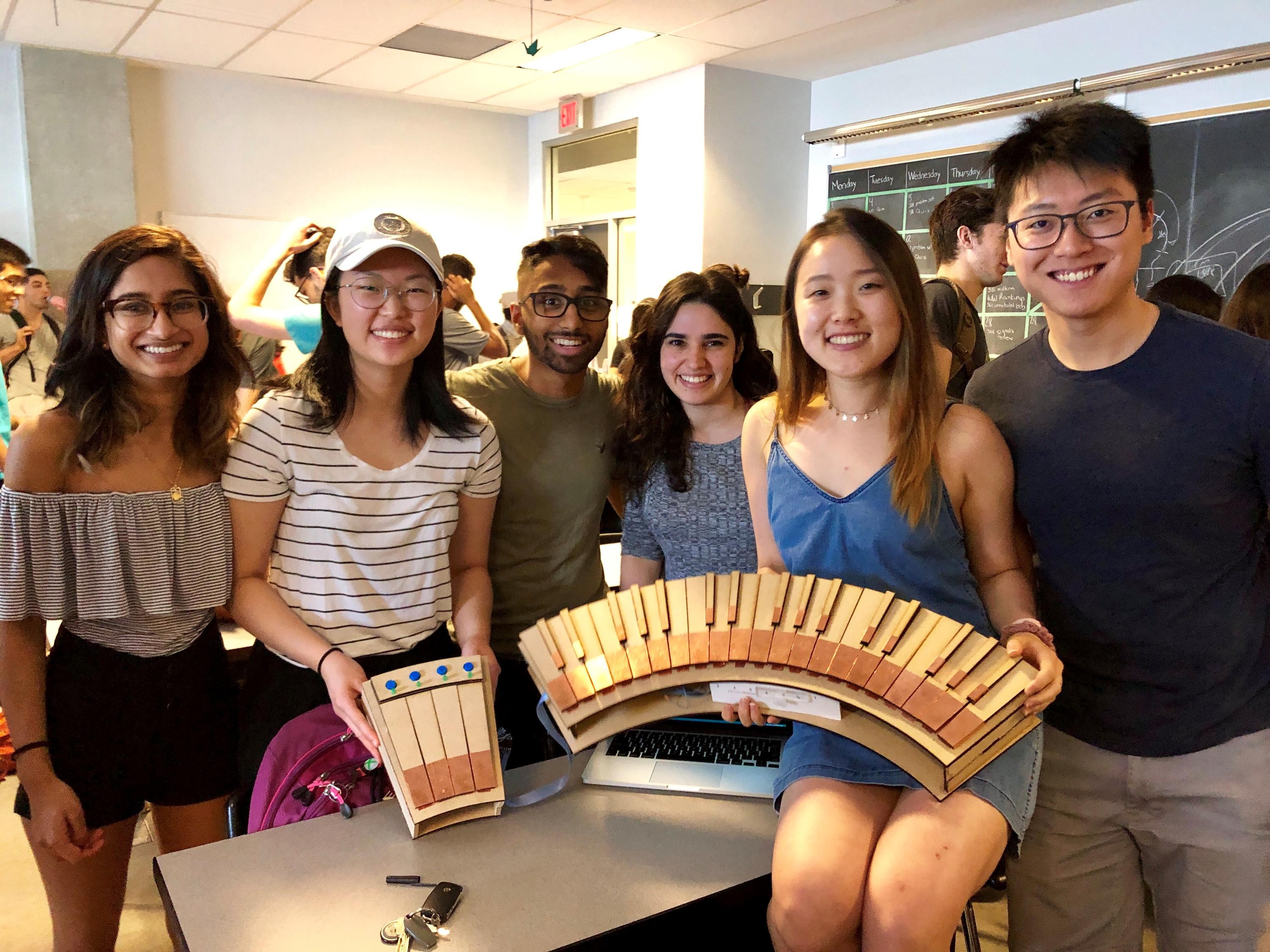A class of systems design engineering students has proven that just about anyone can play a musical instrument, even individuals with complete hearing loss.
On Monday, students in Matt Borland’s SYDE 361 course gave an end-of-term concert demonstrating what they designed over the past three months for people with various disabilities.
By combining hands-on engineering skills and creativity, 16 teams came up with everything from a wearable tech vest that allows people with hearing loss to enjoy music through both sight and vibrations, to a synthesizer for the blind and an accessible xylophone for people with stage 2 rheumatoid arthritis.
Team Toto built an instrument for people with Duchenne muscular dystrophy that is caused

A team of systems design engineering students designed an easy-to-use keyboard specifically for people with Duchenne muscular dystrophy. Team members demonstrated the Toto by playing the band Toto's hit song Africa.
A modified piano for stroke survivors was created by team Astratta.
“When people suffer strokes usually half their body ends up with less dexterity,” said member Rachelyn Collins. “So we created a piano on which they can play with one hand while playing pre-recorded chords that before a stroke could have been played with the other.”
Eason Jao, another member of Astratta, said the team wanted to work with an instrument with which they were all familiar.

“Technically we learned a lot about how to build an instrument,” said Jao. “We also learned a lot about the user group since we actually worked with someone who had survived a stroke. We not only tested the instrument with him, but found out what he goes through in his daily life.”
Members of the Astratta team built a modified piano for stroke survivors. From left: Tanya Ralliaram, Annie Zhang, Neil Agarwal, Rachelyn Collins, Charmaine Wang and Eason Gao.
In the audience were the men and women students turned to for advice on adapting or building instruments for their disabilities.
Borland, a systems design engineering lecturer, said working closely with individuals with various accessibility issues was meaningful for his students.
“We were very lucky to have the support of the Waterloo Experiential Learning Institute that provided us with funding so we could pay for participants to come in,” said Borland. “It was great exposure for our students and provided a lot of growth for them both as designers and as people.”